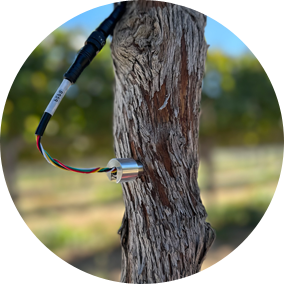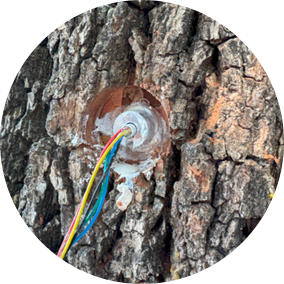About
FloraPulse
Retire the pressure chamber, know exactly when to irrigate, increase crop yield and quality.
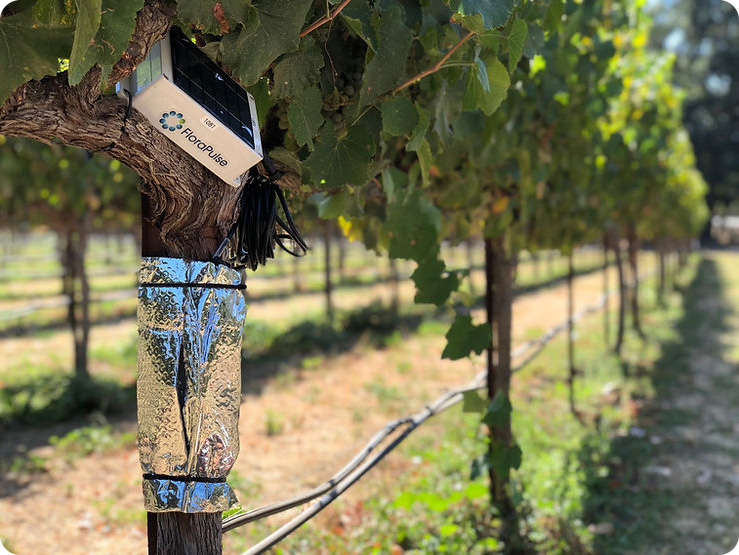
FloraPulse began in the orchards and vineyards of growers.
Since the 1970’s, Alan Lakso, professor of Horticulture at Cornell, had been dragging around the heavy, manual pressure chamber to measure and manage water stress in apple trees and grapevines. Alan was documenting the levels of water stress and their effect on fruit growth and quality. Back then, winegrape growers understood that water stress was important to wine quality, but only had the pressure chamber to measure it.
Why FloraPulse?
Chlorosis California
Causes of Chlorosis in California Plants
Chlorosis, a condition characterized by yellowing leaves due to inadequate chlorophyll, commonly affects plants in California. Various factors contribute to this issue, including poor soil conditions, inadequate nutrients, and environmental stressors. The state’s diverse climate and soil types mean that different regions might experience chlorosis differently. Common causes include high soil pH, leading to nutrient unavailability, and compacted clay soils that hinder root growth and nutrient uptake.
Symptoms of Chlorosis in California
Recognizing chlorosis early is crucial for effective management. Symptoms typically include yellowing of leaves while veins remain green, stunted growth, and premature leaf drop. In severe cases, it can reduce flowering and fruit development. In California, these symptoms may become more pronounced during dry spells or in regions with alkaline soils, where nutrient deficiencies are more likely to occur.
Treatment Options for Chlorosis in California Gardens
Treating chlorosis involves addressing the underlying causes. The use of chelated iron supplements can mitigate iron deficiency, one of the common causes of chlorosis. Adjusting soil pH to a more neutral range through amendments like sulfur can improve nutrient availability. Regular soil testing and targeted fertilization, based on the deficiencies observed, are also effective strategies for managing chlorosis in gardens.
Effects of Water Quality on Chlorosis in California Plants
Water quality is a critical factor in managing chlorosis. In California, irrigation water with high salt content or a high pH can exacerbate nutrient deficiencies. Our organization emphasizes the use of sensors to monitor soil moisture and prevent over-irrigation, which can leach essential nutrients from the soil, worsening chlorosis. Managing water quality, through the use of filtered or treated water, can thus prevent or alleviate symptoms of chlorosis.
Common Nutrient Deficiencies Leading to Chlorosis in California Crops
Iron Deficiency
A common issue due to high soil pH, iron deficiency causes interveinal chlorosis in young leaves.
Nitrogen Deficiency
Manifesting as general leaf yellowing, it often results from inadequate fertilization or poor soil health.
Magnesium Deficiency
Seen as yellowing of older leaves between the veins, it can be managed via appropriate fertilization.
Best Practices for Preventing Chlorosis in California Agriculture
Prevention is often the best approach to managing chlorosis. Employing best practices such as regular soil testing, using organic matter to improve soil structure, and applying balanced fertilizers can maintain optimal nutrient levels and prevent chlorosis. Additionally, monitoring irrigation with precision tools, like our proprietary sensors, ensures that crops receive adequate water without over-irrigating.
Impact of Environmental Factors on Chlorosis in California Horticulture
California’s climate, characterized by its Mediterranean conditions, plays a significant role in plant health. Drought stress, high temperatures, and variable rainfall all influence chlorosis development. Our sensors help monitor environmental conditions, providing data-driven insights that guide irrigation and stress management, minimizing the environmental impacts contributing to chlorosis.
Chlorosis Management Strategies for California Landscapes
Employing comprehensive management strategies is essential for combating chlorosis in California landscapes. These strategies include using the right plant species for specific soil types and environmental conditions, regular monitoring and adjusting irrigation practices based on sensor data, and implementing integrated pest management to reduce additional stressors on plants.
Role of Soil pH in Chlorosis Development in California
Soil pH is a significant factor in the development of chlorosis. In California, alkaline soils are prevalent, which can limit nutrient availability, particularly of iron and manganese. Amending soil with acidifying agents such as sulfur can help lower soil pH, making nutrients more available to plants and reducing the risk of chlorosis. Our technology provides vital soil moisture data to help manage these amendments effectively.
Importance of Proper Plant Nutrition in Preventing Chlorosis in California
Proper nutrition is fundamental to preventing chlorosis. A consistent nutritional program, tailored to the specific needs of crops and adjusted according to soil test results, ensures that plants receive balanced nutrients throughout their growth cycle. Our organization’s focus on precision irrigation not only conserves water but also optimizes nutrient absorption, ensuring healthier plants less susceptible to chlorosis.
In conclusion, addressing chlorosis requires a multifaceted approach that includes understanding local conditions, employing cutting-edge technology, and adhering to best horticultural practices. By focusing on the specific needs of California’s diverse agricultural landscape, we can effectively manage and even prevent chlorosis, ensuring healthy, thriving plants across the state.
Additional Resources:
Generator Services Rock Hill SC
Generator Power Systems, Inc.
Generator Power Systems Inc. is your trusted partner for all of your generator services in Rock Hill, SC. As a dedicated provider of emergency power solutions, we understand the importance of having a reliable power source in critical moments. Our team is committed to delivering industry-leading products and integrated solutions to ensure that power outages do not disrupt your daily activities or essential operations. From sales and installation to rental, preventive maintenance, and repairs, we offer a comprehensive range of services to meet your specific needs. Whether you require a commercial generator, diesel emergency generator, or automatic transfer switch installation,… Generator Services Rock Hill SC
Stretch Wrap Machine Repair Near Me
When you need a stretch wrap machine repair near me, The Packiline Co is the right call. Our experienced repair technicians can make lasting repairs on your line and minimize downtime and losses due to equipment break-down. Reach out to our techs by calling 800-235-1491 or chat with someone now on our site.
Painters in Fayetteville Nc
At Paintworks Unlimited Contracting Co., our team of skilled painters and contractors in Fayetteville, NC is dedicated to providing top-tier painting, renovation, and repair services for both residential and commercial clients. With a wide range of offerings, including interior and exterior painting, pressure washing, construction, and home repair solutions, we pride ourselves on our versatility and attention to detail. Our commitment to exceeding expectations and delivering outstanding results sets us apart as the go-to choice for all your painting needs in the Fayetteville area. With a focus on customer satisfaction, we strive to create a hassle-free experience for every project,… Painters In Fayetteville Nc
How It Works
How It Works
The FloraPulse system is a microchip tensiometer (microtensiometer) that is embedded into the tree woody tissue and directly measures the water status, known as water potential. Because the measurement is taken directly inside the water-carrying tissue, readings are very accurate and reliable. You receive daily midday stem water potential readings, along with science-backed irrigation recommendations.
Weekly Reports
Receive weekly reports on your crop’s water-stress history, color-coded by stress level. Use clear, detailed data to adjust your irrigation and get that perfect vintage, that perfect yield. Every year.
Scientific Validation
The sensor data has been validated against the Scholander chamber with good correlation in prune, almond, winegrape (and others).
Technology Backers

Our technology has been funded by the NSF and USDA, and was originally developed at Cornell University.
What is FloraPulse?
The most accurate way to irrigate.
Customer Testimonials
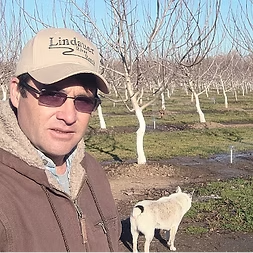

“We were extremely happy with the FloraPulse system we tested in our prune orchard this year. We found that the FloraPulse readings correlated very well with our pressure bomb readings…
Michael Vasey
Lindauer River Ranch
Red Bluff, California
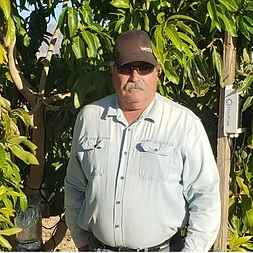

“I am very happy with the FloraPulse unit. I grow a rare mango crop, in a desert environment with extremely high summer temperatures, in alluvium soil that has very limited…
Rod Chamberlain
Wong Farms
Mecca, California



